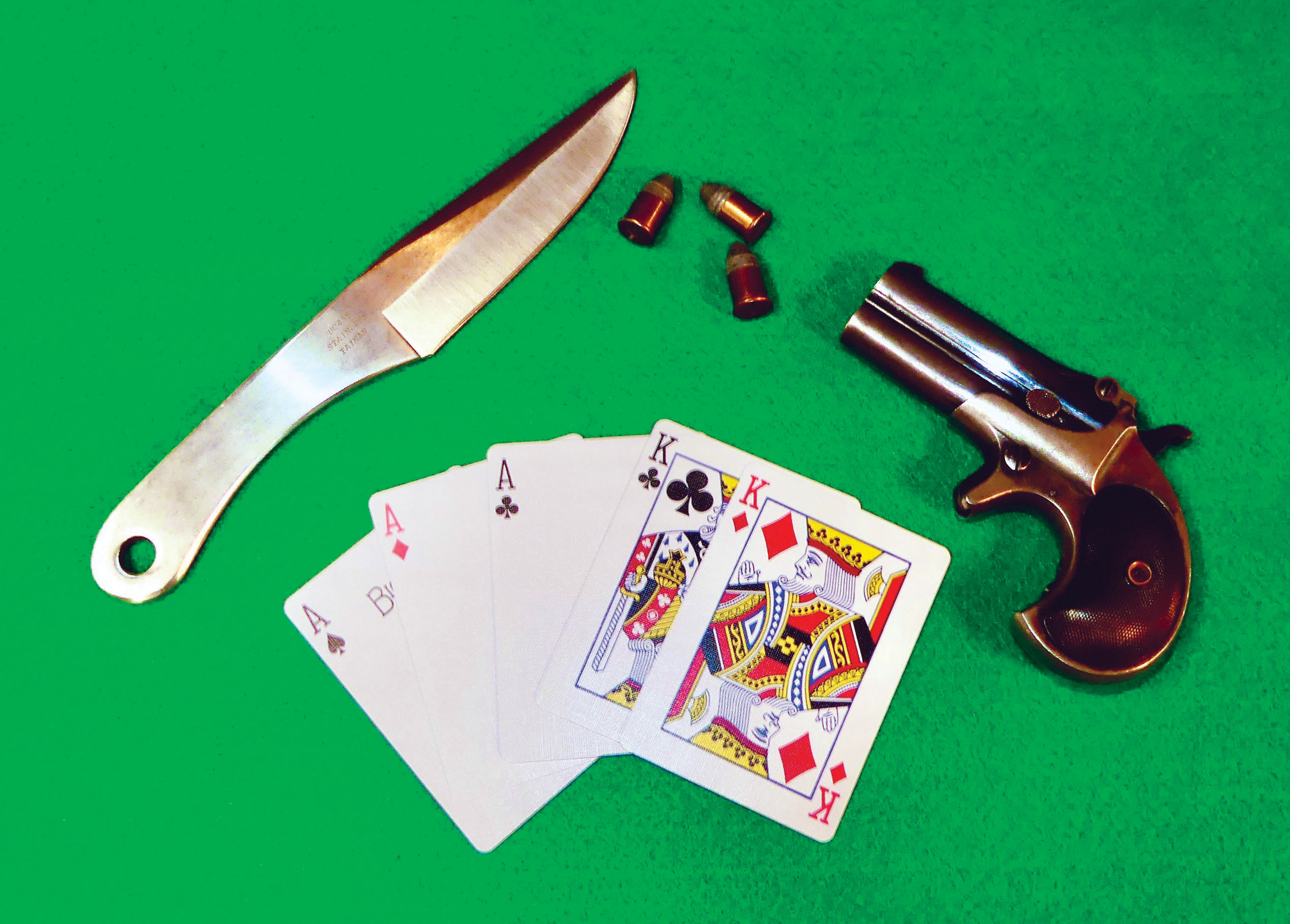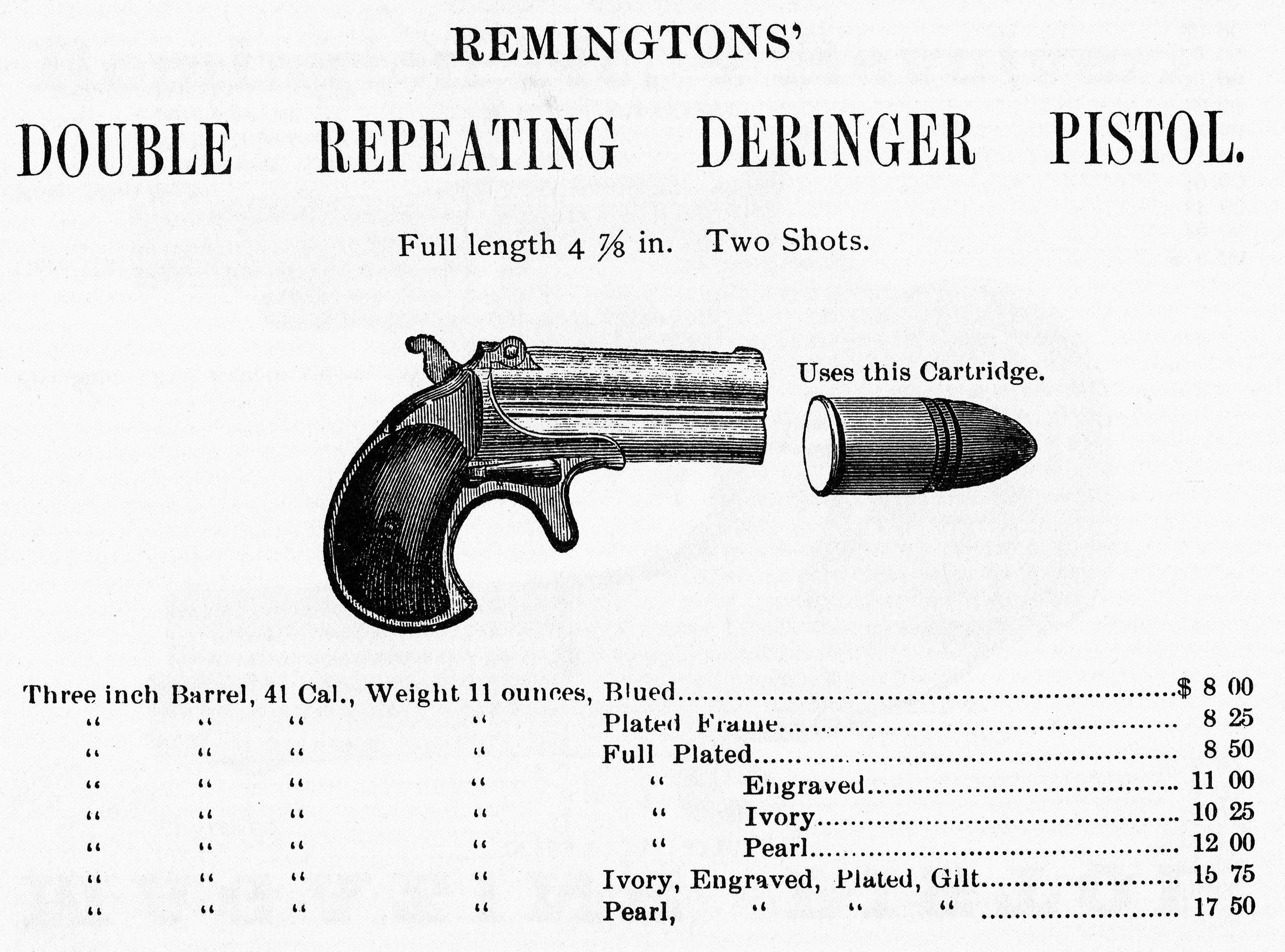For a very long time, I have wanted to own a .41 caliber Remington derringer, maybe because of watching 1950s-era TV and movie westerns, or from having the cap-gun version when I was 10 years old. Whatever the cause, a derringer never came my way because the prices always seemed to be just a little more than I could justify paying. But then, what was advertised as a “mechanically sound example with very little finish left” came up for sale in the Spring 2022 Poulin auction at an expected price range that sounded reasonable. I placed a bid on it and, to my surprise, got my derringer.
According to sources – an
American Rifleman issue from 2014, for example, Remington’s sales of its .41 rimfire over/under derringer started in the late 1860s, and ended in 1935, with around 150,000 sold. The nearly 70 years of production and numbers sold, suggest it was a popular option for people looking for an easily concealable firearm. Actual effectiveness as a defensive handgun by today’s standards is debatable. The late gun writer and sheriff of Deaf County, Texas – Skeeter Skelton – wrote about testing one as a potential backup gun. Skelton decided that was a bad idea when he walked up to his testing medium and discovered the base of the bullet sticking out. Production of the 41 Short rimfire ammunition stopped a long time ago, so maybe the rounds he tested had deteriorated. Possibly, the poor odds of surviving a bullet wound in the nineteenth century was sufficient deterrence to make the Remington derringer a somewhat credible self-defense firearm.
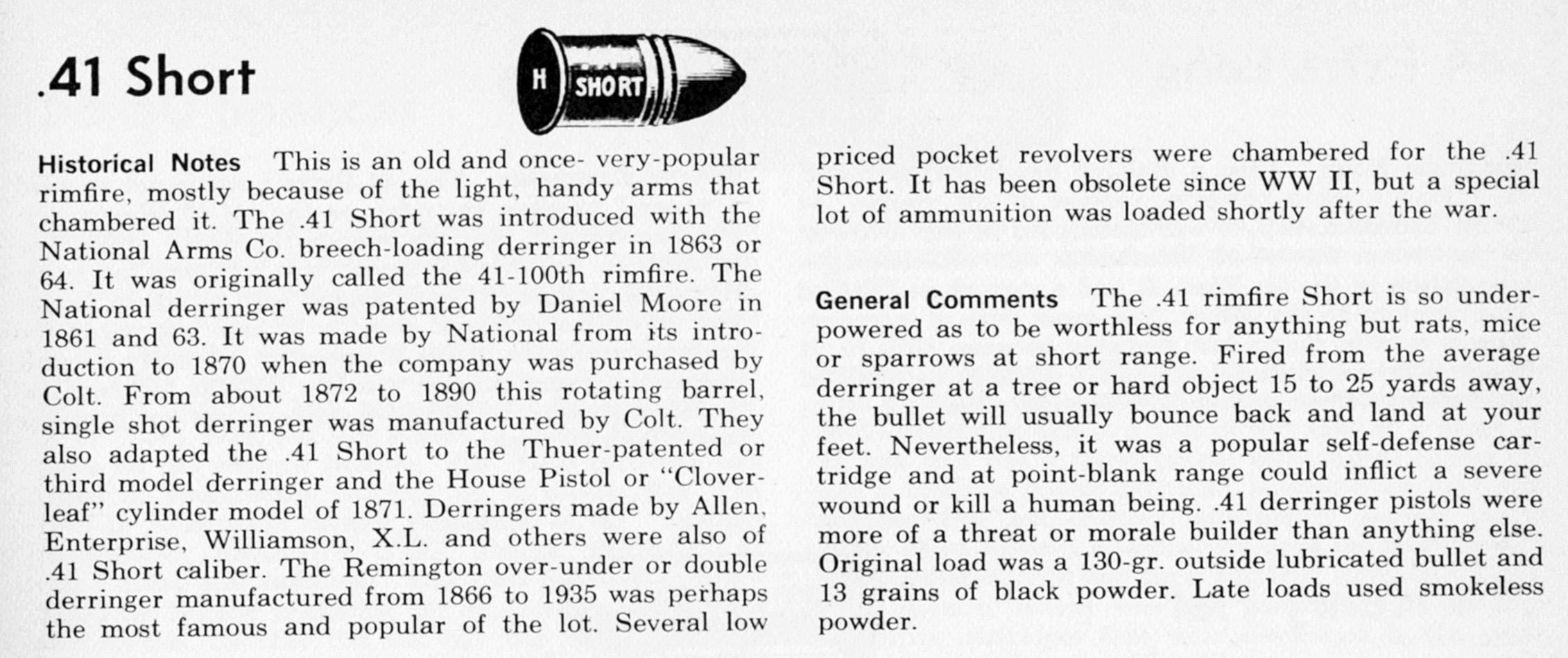
From Cartridges of the World by Barnes.
The Poulin auction charges a 17½ percent auction fee for a credit-card purchase, or 15 percent for paying by check, with a 10-day hold while the check clears. I mailed a check and set about figuring out how I was going to shoot a gun with no commercially available ammo, made more complicated by being rimfire. The gun came with 15 rounds of original copper-cased ammunition. However, those rounds were valuable and likely to be duds anyway, so I didn’t want to shoot them. Some internet searching led me to HC Collections (hc-collections.com) in Saint-Genis, France. HC Collections sold empty .41 caliber brass cases with the head drilled off-center to accept a 22 rimfire blank and a heel-type bullet. The company offered several packages, including one with 12 cases, 25 bullets and simple reloading tools, all packed in a nice wood box. My better option was buying 12 cases, 100 bullets and making my own reloading tools. (HC Collections’ literature states that the bullet is cast in a Hensley & Gibbs mould, but I can’t find it in the H&G mould list.) I expected an order from France to take weeks to arrive, but it arrived in my mailbox before Poulin called to say my check had cleared! I’ve since found companies in Belgium and the United States selling the same or a similar product.
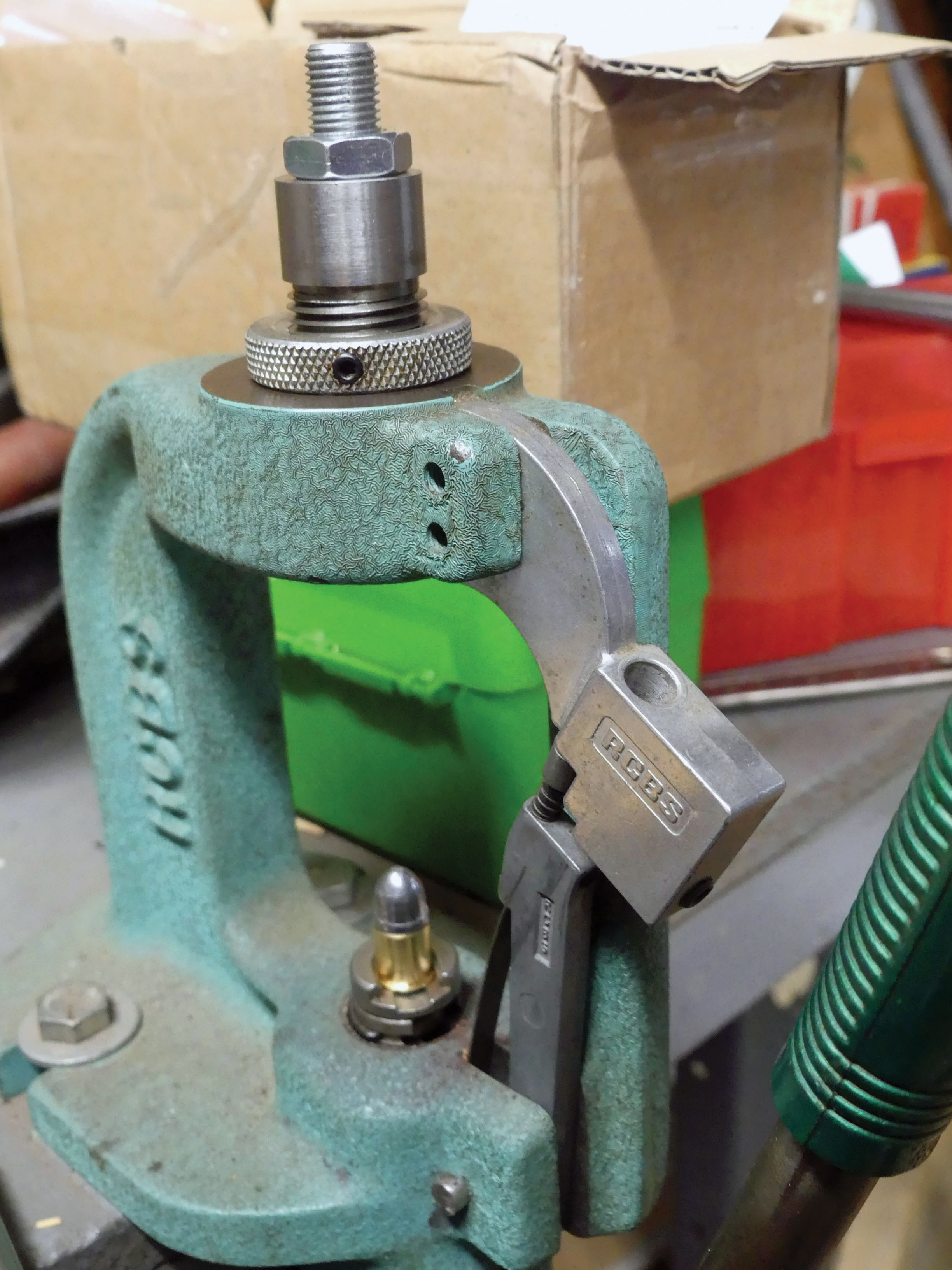
Homemade bullet seating die, Rimfire case in 41 Magnum shell holder.
Loading instructions suggest seating the bullet in the case, adding a small charge of black powder through the offset hole in the base, and then carefully pressing the .22 blank into the base. Making a bullet-seating die was the first step in the project. Rummaging in my scrap-metal bin turned up a short stub of a .22 barrel that was 7⁄8-inch in diameter. The stub was chucked in the lathe, threaded to 14 tpi for most of its length, bored for a 7⁄16 NF thread, and finally bored again from the base to just over the diameter of the brass case. I cut the head off a 7⁄16 NF bolt and bored the shank to match the bullet nose to make an adjustable bullet seater.
HC Collections suggested charging the case through the offset hole in the base after the bullet was seated. It would be easier to insert the .22 blank cartridge, charge the case and then seat the bullet just as one would when loading a centerfire case. I was concerned that having the .22 blank cartridge rim in the shell holder might discharge it, so decided to follow the HC Collections instructions. I had an old handheld powder measure for loading Bullseye powder into a 45 ACP case that delivered a four-grain charge of FFFg black powder. A 22 Hornet case with the head cut off served as a funnel between the powder measure and the offset hole.
Pressing the 22 rimfire blank into the case finished the job, using a block of maple drilled to support the case rim. I had both Flobert and CCI blanks on hand, but found the CCI blanks were too long and bumped the bullet heel, preventing the blank cartridge from seating. Eyeballing the powder level suggested that there was room for about 50 percent more powder (more on this later).
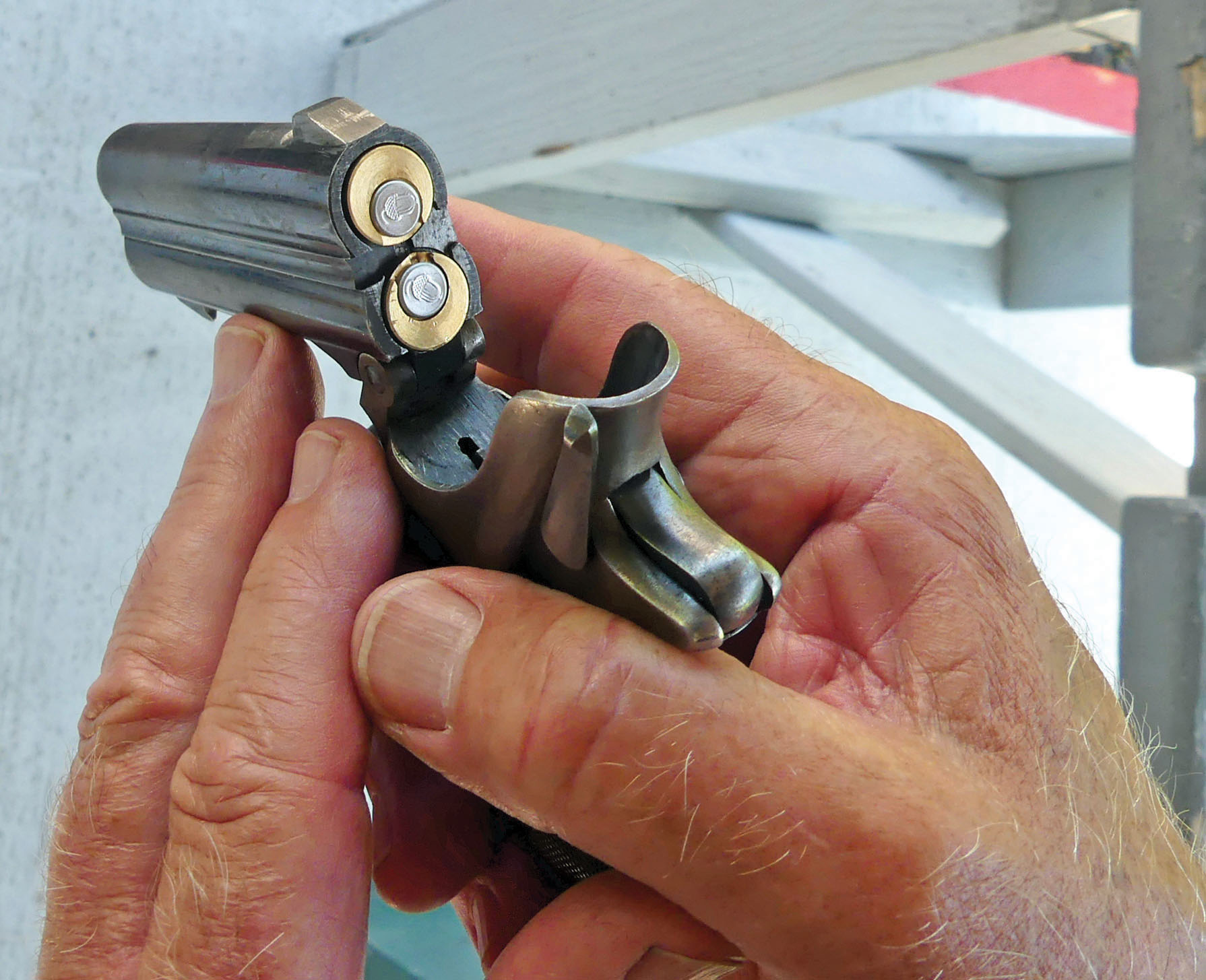
A figure-8 within a figure-8.
With the loading procedure worked out, it only took a few minutes to make 10 test rounds. Because the Remington derringer firing pin toggles between the top and bottom barrel every time it is cocked, the section of rim struck by the firing pin will be at the meeting point of the barrels. It was easy to index the rounds where the .22 blank cartridge would be struck by the firing pin; a figure-8 within a figure-8.
Two of the first set of test rounds refused to chamber. That problem was traced to bullet heels leaving the mould out-of-round, causing the case mouth to distort. A pass with a coarse file on the bullet heel solved the problem. Shooting the Remington derringer was fun, accuracy at a couple of card table-diameters distance was adequate, and recoil negligible.
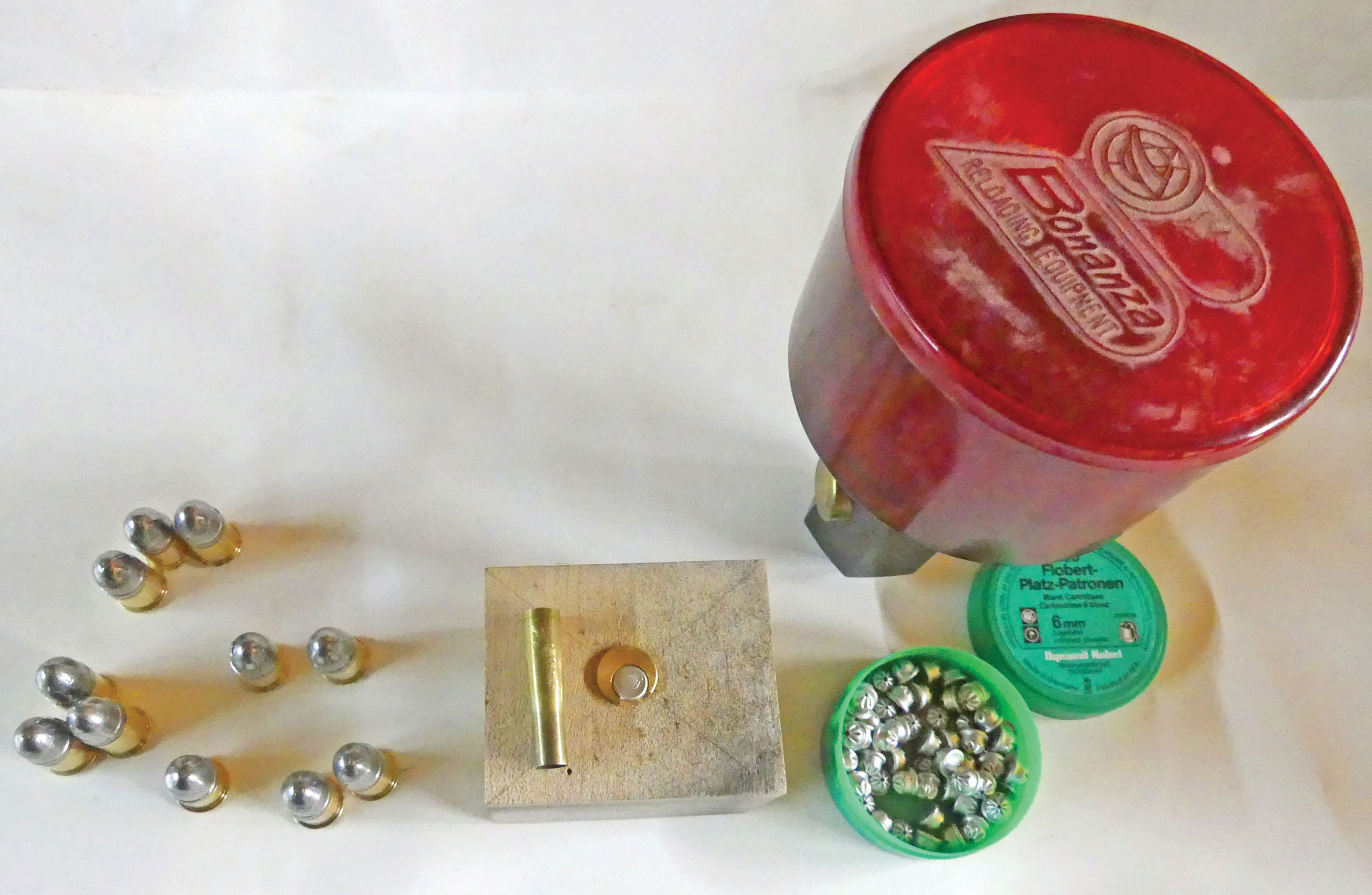
Loads, loading block, Flobert blanks and Bullseye powder measure.Loads, loading block, Flobert blanks and Bullseye powder measure.
To measure penetrating power, I made a target with two ¾-inch thick pine boards separated by ¾ inch. From about 10 feet, a bullet would penetrate the first pine board and drop into the gap between the boards without damaging the second board.
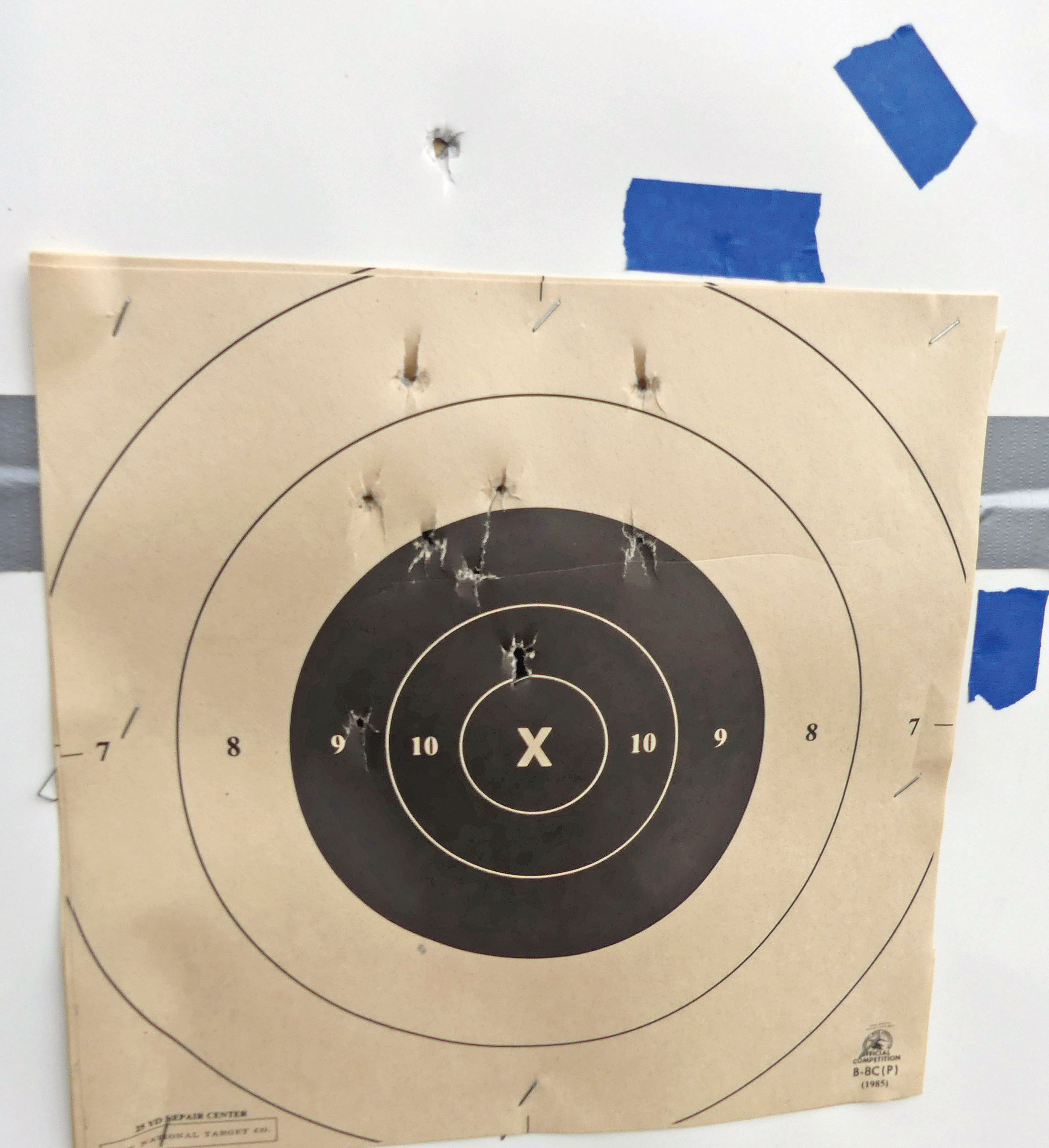
Acceptable accuracy for purpose.
I wouldn’t volunteer to stand in front of the gun when it was fired, but the power wasn’t impressive – in fact, it was just like what Skelton experienced. Filling the remaining powder capacity in the case might increase the bullet penetration, but I didn’t try that, not wanting to stress a 100-year-old gun with small-diameter hinge pin and a tiny latch. Another potential problem was, if the derringer were to be carried along with spare rounds, is the lack of crimp on the case mouth. I could roll the bullet out of the case with a little sideways pressure. Finding your pocket full of cases, bullets, and loose powder seems likely. Dave Scovill, in his book on
Loading for the Colt Single Action, described creating a tool to crimp the 41 Colt case on the heel-type bullet by grinding the appropriate size hole in the jaws of a Vise-Grip pliers. That sounds like a good suggestion.
Now that I’ve “scratched the itch” and owned and fired a Remington derringer, it leaves me wondering what to do next. My brother-in-law, Bill, suggested I brush up on my poker game, buy a white suit and book a riverboat cruise. Hmm…with a sleeve holster for the Remington, maybe I will book that riverboat cruise. But not until I master the throwing knife that I’ll hang down my back, under my collar!
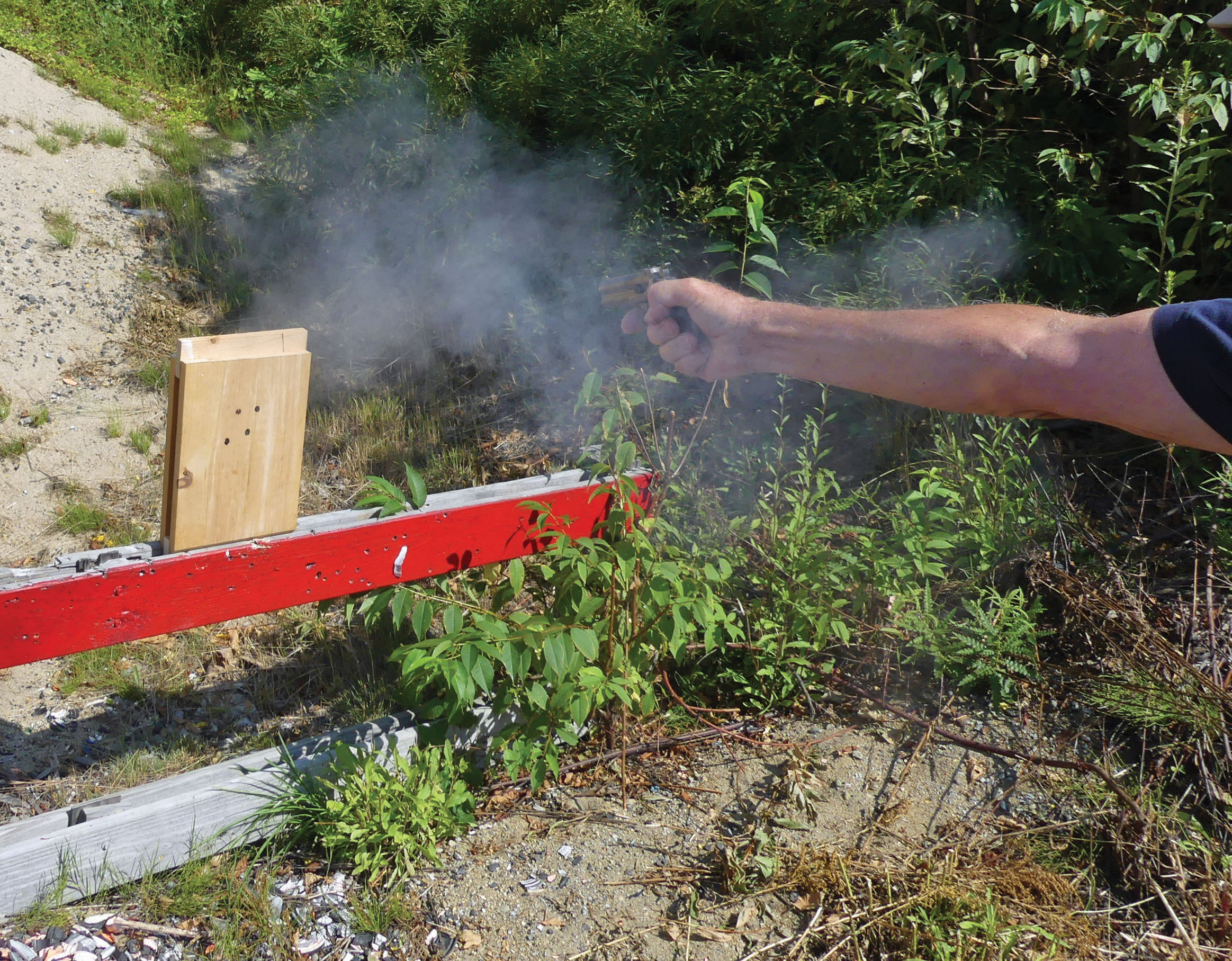
Penetration test.
